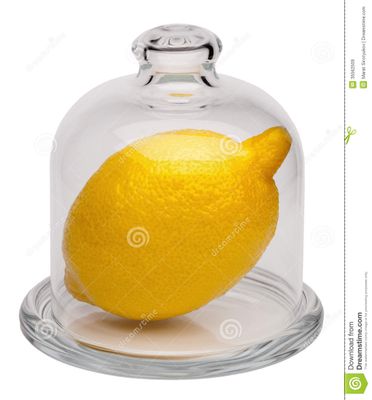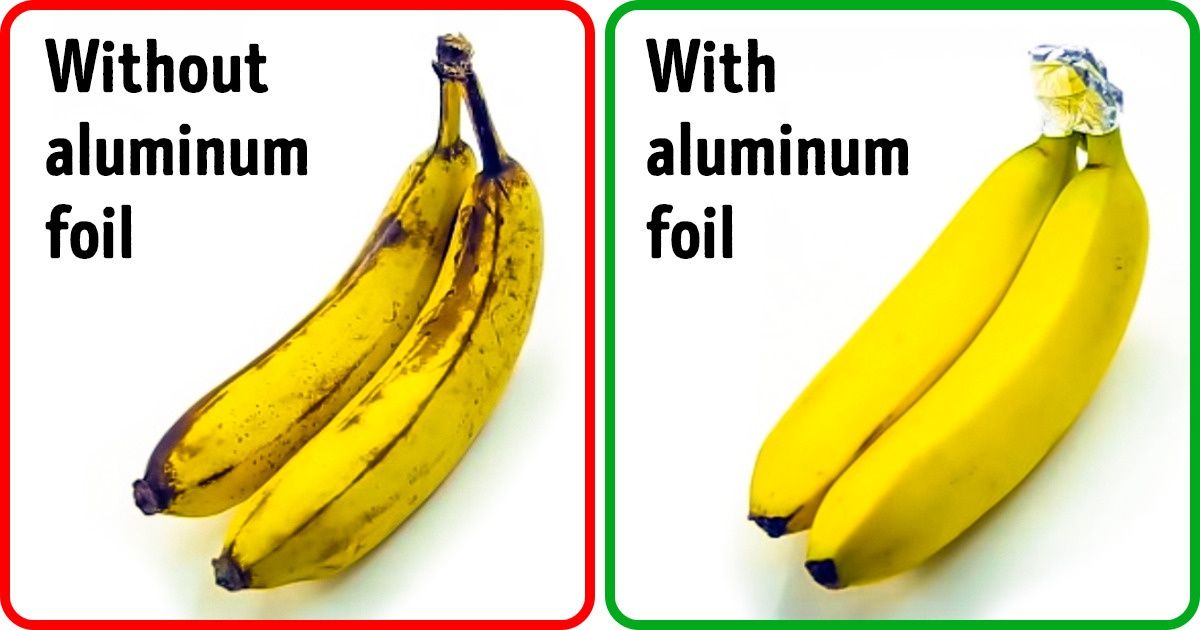I have this little thing to keep my cut lemons fresh :)


Sometimes when you go to buy groceries, you get too excited and throw a little bit of everything in your cart. Fruits and vegetables continue to mature and, unfortunately, you end up throwing away a lot of what you bought because it’s no longer able to be consumed.
Proper food storage can save you money and prevent your fruits and vegetables from decaying quickly. It’s important that you take into account the climate of the place where you live, because this can also affect the maturation of food. The more humid and hot the place is, the more risky it is for some vegetables.
Bright Side shares with you some helpful tips to make your groceries last and stay fresh and crisp much longer.
Bananas produce ethylene gas over their maturation period. By covering the stems with plastic or aluminum foil, you can prevent it from spreading to other parts of the fruit, preventing the pulp from softening too quickly.
Too much moisture could make onions rot in a short amount of time. It’s best to keep them in a cool place with little light. You can put them in nylon stockings or in tights that have holes and hang them to keep them better.
The ideal way to store garlic is to keep it in a container or a paper bag that is in a dark and dry place.
If you don’t want to put them in the refrigerator, it’s important to keep them in water, just as you’d do with flowers.
Avoid placing them in plastic bags. It is better to put them in paper or mesh bags instead. Another option to preserve them may be a box with grids that is covered with newspaper or absorbent paper on the bottom. The ideal storage temperature ranges from 44ºF to 51ºF.
If the avocados are green, placing them in the refrigerator will stop the ripening process. You should wrap them with newspaper and place them inside a paper bag. If you want them to mature even faster, place a banana inside the bag.
The more mature the tomatoes are, the more concentrated their flavors are. When they come into contact with the freezer and remain at that temperature, they lose their flavor. The best thing to do is to keep them at a temperature above 50ºF.
It’s important that you don’t wash mushrooms until you are ready to consume them. By putting them in contact with water, we can generate humidity because they do not dry completely. It is recommended to store them in a paper bag and to add some branches of parsley. It works as an antioxidant and prevents the appearance of spots. Afterward, you should put them in the refrigerator.
It’s better to wash strawberries right before eating them, otherwise they will absorb water and begin to soften, accelerating the maturation process. To disinfect them you can use 1 part white vinegar and 2 parts water. It’s important that you make sure that there are no strawberries with mold because they could ruin the rest. Remove the stem and place them in an airtight bag only if you’re going to freeze them. If they are going to stay in the fridge, put them in a colander.
Wash the leaves in a large amount of cold water. Make sure they are completely dry before storing in the refrigerator. You can place them in a plastic container or in an airtight bag. It’s important that you wrap them well with absorbent paper because this will eliminate the remaining water.
Sometimes we use only one half of the lemon and we end up throwing the other half of it in the trash. The best thing to do is wrap it in aluminum foil. Another alternative is to put salt on the pulp and store in the refrigerator. Before using it, you just have to rinse it well.
To prevent it from losing its green color and turning black, put a few drops of lemon on it until all the pulp is covered or brush the avocado half with a little bit of edible oil. Another alternative is to line the bottom of a container with chunks of onion, then place the avocado, cut side up, on top.
Freshly peeled potatoes will quickly start to turn gray. To prevent this, place them in a container, cover them with water, add a few drops of white vinegar, and store them in the refrigerator.
To keep ripe bananas in good condition, remove the peel, cut them in half, and place them in an airtight bag. Then put them in the freezer.
This is a great way to use your freezer to preserve herbs. Finely chop the herbs or plants you want to use and pack the wells of ice cube trays with them. Add melted butter (let it cool before freezing) or extra virgin olive oil.
The World Health Organization (WHO) recommends that we consume about 400g of fruits and vegetables daily. It’s important that the consumption of these foods be varied because they provide the body with nutrients that help prevent diseases.
The colors of the fruits and vegetables indicate specific properties:
How do you preserve your fruits and vegetables? What tip would you add to the list? Tell us in the comments.
I have this little thing to keep my cut lemons fresh :)

I wrap my cut-in-half avocados in aluminum foil or with plastic wrap, They can stay fresh way longer this way!
Just a normal water without vinegar helps to preserve peeled potatoes :)











